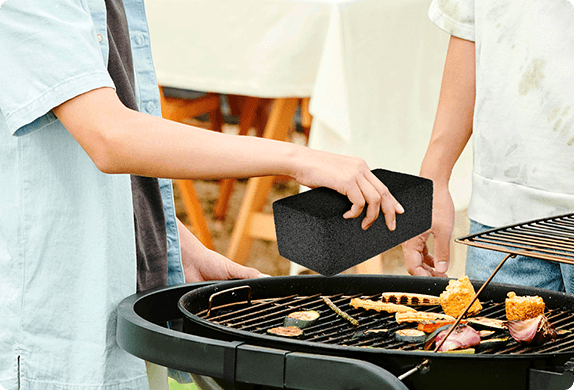Why It’s Important to Clean Your Pumice Stone
A pumice stone is a natural, porous volcanic rock that is widely used in personal care for its effective exfoliating properties. It offers a simple and efficient method to remove dead skin cells, especially from areas such as the feet and elbows, leaving the skin feeling smoother and more refreshed. However, its porous nature also makes it susceptible to accumulating dead skin cells, bacteria, and other residues from regular use.
Failing to clean your pumice stone can significantly diminish its effectiveness. As it becomes clogged with dead skin cells and other build-up, its abrasive surface can deteriorate, making it less proficient at exfoliating. Additionally, a dirty pumice stone can pose several health risks. The accumulation of bacteria and other microorganisms on its surface can lead to skin infections, irritations, and other dermatological issues when used repeatedly without proper cleaning.
Moreover, using an unclean pumice stone can exacerbate skin problems, rather than mitigating them. For individuals with sensitive skin or pre-existing skin conditions, the use of a contaminated pumice stone can result in severe discomfort and potential health hazards.
Cleaning your pumice stone regularly provides numerous benefits. Firstly, it ensures maximum efficacy and a longer lifespan for the stone, allowing you to continue experiencing optimal exfoliation. Secondly, it helps maintain hygiene standards, thereby preventing the risk of infections and skin irritations. Lastly, a clean pumice stone guarantees a more enjoyable and safe skincare routine, contributing to overall skin health.
Step-by-Step Guide to Cleaning Your Pumice Stone
To ensure your pumice stone remains effective and hygienic, regular cleaning is essential. Here’s a detailed, step-by-step guide to properly clean your pumice stone:
Materials Needed:
Before you begin, gather the following materials:
- A small brush (an old toothbrush works well)
- Liquid soap or mild detergent
- A bowl of warm water
- Towel for drying
Preparation:
First, rinse the pumice stone under warm water to remove any loose debris. Hold the stone under running water while gently scrubbing it with your fingers to get rid of surface dirt and particles.
Cleaning Process:
1. Apply a small amount of liquid soap or mild detergent to the pumice stone.
2. Use the small brush to scrub the stone thoroughly. Pay special attention to the crevices, where grime and dead skin cells tend to accumulate. Make sure to work the bristles into the nooks and crannies to ensure comprehensive cleaning.
3. Rinse the pumice stone under warm water once more, continuing to scrub with the brush until all soap residue is gone.
4. If your pumice stone still feels dirty or has an unpleasant odor, consider boiling it. Place the stone in a pot of boiling water for about 10 minutes. Boiling helps to disinfect and remove deeply embedded grime.
5. As an alternative, soak the pumice stone in a disinfectant solution for about 5-10 minutes, especially if it’s frequently used. This can ensure that any lingering bacteria are eradicated.
Maintenance Tips:
Depending on the frequency of use, clean your pumice stone at least once a week. If used daily, more frequent cleaning may be necessary.
After cleaning, thoroughly dry your pumice stone with a towel and store it in a dry, well-ventilated area. Avoid storing it in a damp environment as this can encourage bacterial growth.
Troubleshooting Common Issues:
If your pumice stone develops a lingering odor, despite regular cleaning, consider replacing it to maintain hygiene. Persistent grime may require a more thorough scrubbing or soaking in disinfectant for a longer period. Proper storage can also mitigate many common issues, ensuring your pumice stone stays clean and ready for use.
By following these steps, you can prolong the lifespan of your pumice stone and maintain its effectiveness in your personal care routine.



